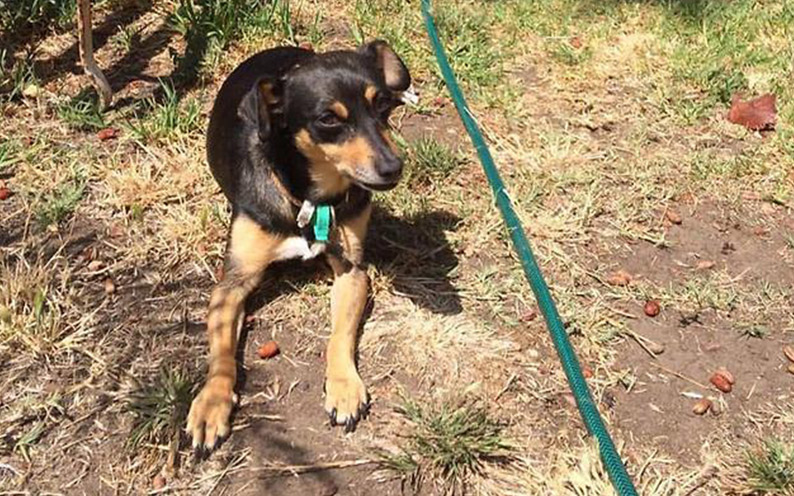“Australia’s strict ‘no pet’ rental rules made me choose between having a permanent place to call home or having a dog. I chose my fox terrier”, writes Scarlett Harris, “and now I’m homeless.”
I’ve never had a problem finding a rental property. That was before I decided to be honest about having a dog when putting in an application to rent. In the past two months, since returning from an overseas trip, I’ve enquired about probably 100 rentals and share houses in Melbourne, and inspected around 15, only one of which was explicitly pet-friendly. It also happened to be a dive.
Right now, I am homeless. Luckily, I have savings and a support network of friends and family members who have offered to take me in. The rise of people sleeping rough with dogs in tow is austere and, now having first-hand experience, I can see how easily this can happen when the choice is between having four walls and a roof to call home and giving up a family member.
“These are adults who are having their life choices and choice of companion dictated to them by a landlord.”
Jennifer Duke, review editor at Domain.com, agrees, telling me that the lack of rentals that are pet-friendly results in “at some point, some pet owners [having to] make the decision between having a roof over their head and keeping their dog or cat. These are adults who are having their life choices and choice of companion dictated to them by a landlord.”
Laura, a digital content producer from Melbourne (who asked to have her last name omitted at the risk of damaging future housing prospects), feels this keenly. She had to vacate her current place when the landlords found out she had a cat. Though Laura says she had planned to ask them if she could get a cat a few months into her lease, initially the landlords “said it’s fine to have an animal, and sent us a pet clause to sign promising to have the place fumigated and cover any damage that may be caused by the animal, which we did”.
Despite it being a well-trained, elderly rescue cat, and the house having floorboards and no carpet, “[the landlords] came back and said [they] want to increase the bond by $1000 because we have a cat and didn’t disclose it”.
“I felt very uncomfortable and harassed,” she tells me. “We really were not given a proper explanation for the increase [and] the bond for our place is already way more than the standard four weeks’ rent, [so] I’m now looking for a new place to live.”
“There is a risk with having animals – some of them do cause damage. However, there’s also a risk with children and tenants themselves.”
Duke says she empathises with landlords who don’t allow pets. “There is a risk with having animals – some of them do cause damage. However, there’s also a risk with children and tenants themselves,” she says. But, as an animal-lover and foster-carer, Duke is very concerned by the alarming rate at which pets are dumped due to “difficulty accessing, and maintaining access to, appropriate housing”.
“If the rules didn’t force tenants to ‘ask for permission’ for a pet then… fewer renters would be hiding a cat or a dog,” Duke says. “There will always be some properties that aren’t suitable for animals or where bylaws don’t allow them, but in most other circumstances it doesn’t make sense that animals shouldn’t be allowed.”
Supportive housing is cheaper than chronic homelessness
Laura adds that the lack of pet-friendly landlords and a rental market that seems to be at boiling point. “It also makes you feel like the only way to get approved [as a pet-owner for a rental] is to lie.”
Animal Welfare League Queensland Strategic Director, Joy Verrinder, believes that “laws should be reformed to make it illegal for any body corporate or landlord to refuse a resident with a pet—as long as they can demonstrate they are a responsible owner”.
“The decision should be based on the individual animal as their suitability will depend on many factors such as activity level of the animal and their owner, personality and training,” Verrinder says.
‘Sleepbus’ gives homeless people a comfortable place to sleep
And if efforts to combat homelessness such as Sleepbus, a portable, short-term alternative to spending the night outside, allows four-legged companions, then why can’t rental properties?
The only thing that’s kept me going throughout these months of uncertainty is having my fox terrier by my side. No matter where I am, if she’s with me, I’m home. So why don’t landlords and real estate agents understand this?
At the time of writing, Scarlett was homeless. As of publication, Scarlett is still without a permanent home and has temporarily moved back in with her mum while she continues to look for a rental property.
Scarlett Harris is a freelance writer musing on femin- and other -isms. You can read her previously published work at her website, The Scarlett Woman, and follow her on Twitter @ScarlettEHarris.


